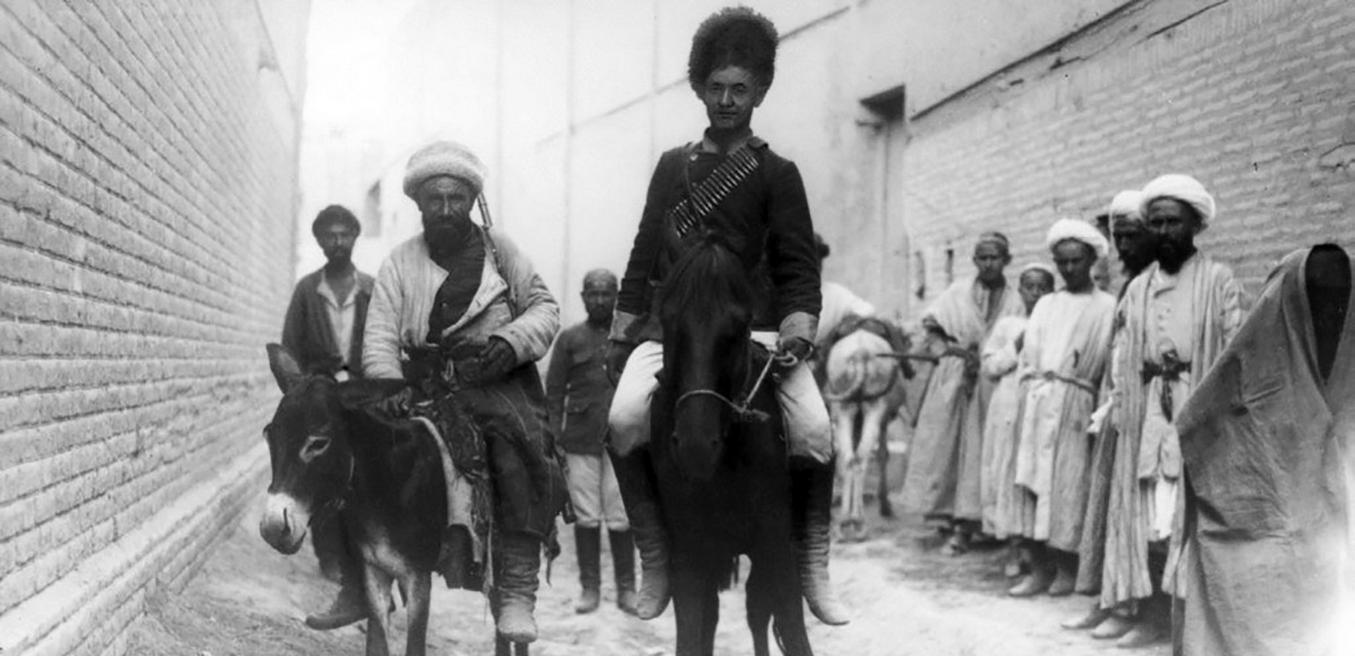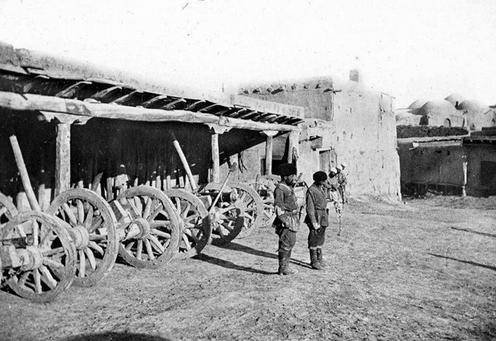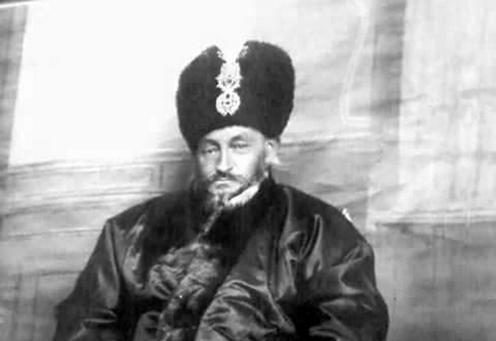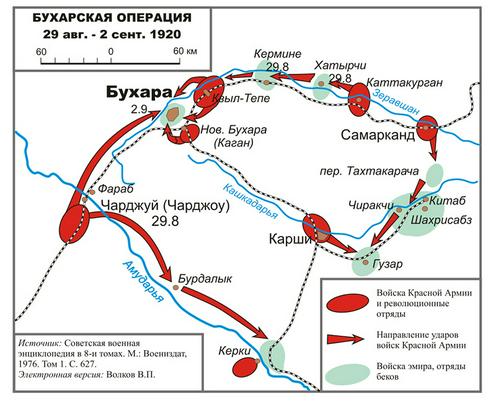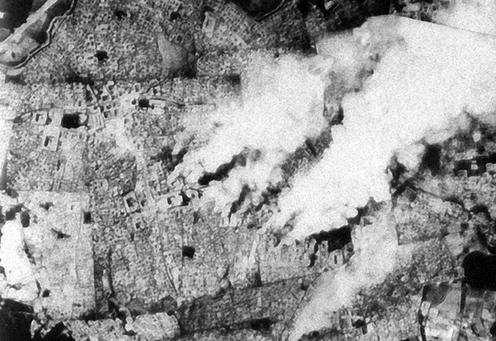From 1873, the Khanate of Khiva and the Emirate of Bukhara existed as Russian protectorates, to a large extent retaining their patriarchal way of life. The Russian Revolution of 1917 provided an impulse for change, and in 1919 a communist uprising got underway in Khiva. The local communist forces proved insufficient to achieve victory over the Khan, but Bolshevik troops were despatched to offer support to the Khivan rebels. In February 1920, the Khivan Khanate was abolished and a new Khorezm People’s Soviet Republic was declared under the RSFSR. In the Bukharan Emirate, too, revolutionary organisations appeared after 1917, working in tandem with the Bolsheviks to prepare to overthrow the state. In September 1920, the Red Army entered Bukhara and the establishment of a new Bukharan People’s Soviet Republic was announced. Four years later, these republics too were abolished. Was there any chance of preserving the Bukharan and Khivan polities? How far did the local populations support the revolution? Why did the English not send help to the Khan and the Emir? These and other questions were answered for Fergana by Doctor of Historical Sciences and Senior Fellow at the Russian Academy of Science’s Institute of Oriental Studies, Sergei Kuzmin.
– By 1917, the Khanate of Khiva and the Emirate of Bukhara had already been under Russian protectorate for almost half a century. To what extent had life in these states changed over this time, especially in comparison to Central Asian territories that were under the direct control of the Russian Empire?
– After the Khan of Khiva and the Emir of Bukhara acknowledged their status as vassals of the Russian emperor, their kingdoms were not annexed to Russian territory but instead became protectorates. The social structures of the two states hardly changed at all. Under the continuing conditions of the ancient regime, ordinary Khivans and Bukharans continued to see their monarchs and spiritual leadership as unquestioned authorities. Monarchic government, resting on traditionalism, retained its charismatic legitimacy in the eyes of its subjects. It is only possible to speak of popular dissatisfaction with concrete instances of feudal excesses, not of dissatisfaction with the social structure itself. Of course, interethnic clashes (especially between Uzbeks and Turkmens), competition for water, and other socio-economic conflicts did take place. Under the protection of the Russian emperor, the situation in both monarchies improved. For example, slavery was abolished, the internal situation became more stable, a railway was constructed between Russia and Bukhara, roads and canals were built and industry was developed. Alongside this, Russian colonies established themselves on the territories of both monarchies, and became foyers of revolutionary sentiment. In comparison to the parts of Central Asia that were directly incorporated into the Russian Empire, of course, Khiva and Bukhara to a large extent retained their independence, though they cannot truly be called independent states.
– Why, in your view, did the imperial government not deal with Khiva and Bukhara the same way as it had with the abolished Khanate of Kokand right from the start? How did this formal independence benefit Saint Petersburg?
– The Russian leadership considered the Bukharan Emirate and Khivan Khanate’s vassal status to the Russian emperor sufficient. Especially since both monarchs always remained faithful to him. Russia’s economic interests in both kingdoms were upheld. Thanks to Russia, there was a relative stability in both Khiva and Bukhara. They served as a buffer, bolstering the security of Russia’s southern provinces. It is difficult to say whether they would ultimately have been incorporated into Russia. History has no subjunctive. As for the Khanate of Kokand, the latter years of its independence were notably different from the situation in Khiva and Bukhara. Instability was on the rise. The lawful monarch – Khudayar Khan – was faithful to Russia. But he was unable to maintain his grip power and during yet another rebellion, he fled into Russian protection. The rebels elected his son Nasruddin as khan. After defeating the rebels, General Kaufmann signed a peace treaty with him and Kokand became a Russian protectorate, like Khiva and Bukhara. But the unrest continued, and Nasruddin too fled into Russian protection. After this, Kokand was taken by Russian troops and the Khanate abolished. The culprit in this was not Russia, but those who stirred up unrest against their legitimate khan.
– Were the political and social processes that preceded the abolition of the monarchies in Khiva and Bukhara the same as those in the Russian empire or was there some essential difference between the two types of case? And between Khiva and Bukhara themselves?
– The political processes there were different from those in Russia, but not in any essential way, I don’t think. What is essentially important thing is the similarities: all three were traditional, monarchic societies, and the policies of not only the Russian empire, but also of Khiva and Bukhara too, were aimed at preserving this traditionalism through the enacting of slow and rather careful reforms. Of course, there were historical, religious and national differences. The Bukharan and Khivan societies were on the whole more conservative, more religious, less penetrated by revolutionary ideas. These ideas appeared alien to them at first. But revolutionary ideas were initially alien in Russia too. They came to Russia from the West, as is well known. In Khiva and Bukhara, revolutionary ideas came from Russia: partly through various left-wing parties, and partly through the Jadids (early local reformist intellectuals – from the Arabic word for ‘new’ – Fergana). But even the Jadid movement itself developed out of foreign sources – from European thought and the ideas of the Young Turks, mediated by Russian Muslims. All these ideas had important points in common: they came from outside, and were ultimately aimed at the destruction of traditional society and the abolition of the monarchy.
– Should Young Khivans and Young Bukharans be seen simply as local versions of Jadidism? What set these phenomena apart, if anything?
– I wouldn’t see them simply as local versions. Of course, in this instance too, there were differences, related to local circumstances. But the essential thing is what they had in common. Both the Young Khivans and the Young Bukharans initially advocated reforms (ever more radical ones), based on imported conceptions. This is hardly surprising: their leaders lived for long periods outside of their native countries, acquired these borrowed ideas, and then they set about using them to bring about change back home. Actually, it is possible to find counterparts to these individuals and parties both in Russian history and in the history of other countries – for example Mongolia. What is common to all these cases is that certain new conceptions infiltrated from abroad, which they then made the basis for a transformation of their societies. Existing traditional society was necessarily seen as backward. It was simply a question of how fast or how deeply it was felt necessary to enact change – through the implementation of reforms (initially advocated by both the Young Bukharans and the Young Khivans) or through revolution (advocated by the communists). Yet there was no clear gulf separating these two attitudes, but rather a gradual transition: revolutionary Young Bukharans actively worked for revolution in Bukhara together with the Bukharan communists.
– The Soviet authorities, like the Provisional Government before them, hurried to recognise both the Khanate and the Emirate. What was in the Bolsheviks’ minds?
– The same, I think, as was in their minds when they recognised other states that successfully carried out a socialist revolution. Engaged in exporting revolution, the Bolsheviks claimed that these revolutions were carried out by the people (which was not in fact true). In order to do this, underground communist or pro-communist parties or groups were formed in certain states, of necessity including members of the local populations. These parties then attempted to seize power and, where they failed (as was the case in the monarchies of Central Asia), called on the Bolsheviks for assistance. The Red Army came and fulfilled what was called its “international duty”. As a result, power was transferred to these very parties that operated under Bolshevik patronage. Then, instead of being a part of the Russian Empire, the republic joined the USSR on the basis of the already established common ideological foundation. Such a scheme was more effective than armed conflict followed by the formation of a Bolshevik party and then a revolution.
– Is it accurate to say that Khiva and Bukhara were doomed to destruction, having the Bolsheviks as their neighbours? What was the general “party line” with respect to the eastern monarchies – was the possibility of maintain their existence, in some form or other, considered?
– At the time, the Bolsheviks were trying to export the revolution to the whole world. Governments located on the territory of the collapsed Russian Empire were in a zone of particularly high risk. The Khivan Khanate and the Bukharan Emirate were deeply wedged into in the territory of the former Russian Empire between Afghanistan and the Aral Sea. In the Tsarist era, they maintained good relations with Russia, and were supported by it, but when the Bolsheviks came to power, they were an incongruous blotch on a map that had been coloured red. Monarchy and traditionalism, particularly in Bukhara with the extensive influence of Islam there, were seen by the Bolsheviks as a threat. The “party line” was to establish and support (including militarily) red parties in order to export the revolution. So yes, the Bukharan Emirate and the Khivan Khanate were indeed doomed.
– The Kolesov campaign against Bukhara in 1918 – was it an initiative of local Bolsheviks or was it sanctioned from the centre? Why did it end in defeat?
– Fyodor Kolesov was the chairman of the Council of People’s Commissars of the Turkestan Soviet Republic, so he represented the centre there. He came to an arrangement with the Young Bukharan party central committee member Khojaev and others. So the exportation of the revolution was carried out according to the same schema of which I just spoke. Kolesov trusted the Young Bukharans and assumed that the arrival of Russian troops would provoke a mass uprising, while the Emir’s army was weak. The expedition ended in failure because Kolesov and Khojaev lacked sufficient forces. Besides this, as Khojaev later correctly wrote, the joint Russian and Young Bukharan attack on Bukhara was perceived by the Bukharan population as an external invasion – which, indeed, it was. So the local population defended their monarch.
– Did the appearance of Junaid Khan on the political scene in Khiva accelerate or prolong the khanate’s agony? Can his role be compared to that of Baron Ungern in Mongolian history? Did Bukhara have its own such “hero”?
– It’s hard to say whether it accelerated the process or prolonged it. I think that the Bolsheviks would have wiped out the Khivan Khanate in any case. Of course, Junaid Khan exacerbated the Uzbek-Turkmen discord, but even some Turkmens rose up against him. The murder of the lawful monarch, Asfandiyar Khan, and the installation on the throne of a puppet ruler did nothing to promote the cohesion of Khivan society. But as an adversary of the communists, of course, Junaid Khan was one of the most effective.
With respect to Ungern, drawing a comparison between him and Junaid Khan is misleading. Ungern liberated Mongolia from Chinese occupation and reinstated the rightful monarch, Bogd-Gegeen VIII. If it hadn’t been for Ungern, Mongolia would not have become an independent state but would have remained under Chinese occupation. When Ungern arrived in Mongolia, Bogd-Gegeen was not his puppet, and Ungern was not the dictator of Mongolia. It was Bogd-Gegeen who determined Mongolian policy in this period, and not Ungern. Important segments of Khivan society (Uzbeks, Turkmens and others) rebelled against Junaid Khan, whereas only a handful of Mongolian revolutionary with ties to the communists opposed Ungern. But there is a parallel between events in Khiva and Mongolia – in Mongolia the Bolsheviks exported the revolution with the help of the Mongolian People’s Party, and in Khiva with the help of the Young Khivans. In both instances, the invasion of Soviet troops occurred on the invitation of these parties, who stood under Bolshevik protection.
As for Bukhara, I don’t see any such hero there. When it comes to the exportation of the revolution and integration into the USSR, the general schema is the same as in Khiva. It should just be pointed out that the fate of the monarchs of Mongolia, Khiva and Bukhara were different: Bogd-Gegeen, stripped of real governmental authority, was allowed to remain the country’s nominal monarch until his death; the Bukharan Emir was able to escape to Afghanistan and died in exile; but the fate of the Khivan ruler was the most pitiful – he was arrested and deported to Ukraine, and died there of destitution and illness.
– What pretexts did the Bolsheviks use to launch military actions against the two states? Did Soviet Russia effectively violate its agreements with these Uzbek rulers?
– The pretexts were everywhere the same: armed support to the local populations, who are alleged to have requested help. In Khiva it was to assist the peaceful local population in defeating Junaid Khan; in Bukhara, to support the Young Bukharan and Bukharan communist uprising that was claimed to represent the people’s interests. In reality, it was communist aggression aimed at overthrowing other states’ legitimate governments and transferring power to groups who stood under Bolshevik patronage.
– Despite a widespread view to the contrary during Soviet times, the English were extremely passive in Central Asia (with the possible exception of the Transcaspian). Why, in your opinion, did they not offer more solid support for an emirate that shared a border with the then British-controlled Afghanistan?
– Why should they have gotten themselves involved? In 1919, Afghanistan, which had been their protectorate, declared independence, and the third Anglo-Afghan war was underway. The English were concerned about their position in India; for them, the situation in Afghanistan was far more important than that what was going on in Bukhara. The Bukharan government asked the English for military assistance, as was its sovereign right. But the assistance that came was negligible. And later, when the Basmachi revolt broke out, the English position was effectively neutrality.
– Did the Khivan and Bukharan armies stand any chance of withstanding the Red Army? How did the fighting unfold and was it a simple walk in the park for Frunze’s forces?
– The Khivan Khanate and the Bukharan Emirate could not, of course, successfully oppose the Red Army. The Bukharan Emir attempted to set up an effective army, but had neither the time nor the resources to do so. All the same, the military campaign against Bukhara was not a walk in the park for Frunze, even though his army was well prepared. According to the recollections of the Bukharan Emir Alim Khan, there was no declaration of war and the attack came suddenly. In spite of this, the Red Army’s first assault on Bukhara was repelled. It turned out that the Bukharan revolutionaries’ assurances that the population was ready to revolt had been lies – Frunze himself said this. The attack on the Bukharan capital began on 30 August, and by 2 September it was completed. The decisive role was played by the air and artillery bombardment of fortresses, residential areas and mosques. Chemical artillery shells were also used. The attack caused extensive loss of life, and the Bolshevik troops then looted the city.
– What is known about the Bolsheviks’ use of chemical weapons against Bukhara?
– Here’s the testimony of Moscow chairman Mashitsky. You can find it in the book by Vladimir Genis, С Бухарой надо кончать, based on documentary material.
“The revolution, having proved not to be imminent from with, turned into a full-scale offensive on the part of the Red Army, totally unconcealed and disregarding any notion of the right of the Bukharan people to determine their own future, and in reality Bukhara became an occupied country. Several million bullets were fired against Bukhara, together with several thousand artillery shells, not a small number of which were chemical shells. The force of the artillery and infantry fire was so great that there was not even any chance for the Bukharan soldiers to switch sides and join the revolution. The whole of the centre of Bukhara and the areas adjacent to the train station were utterly destroyed. Historical landmarks were obliterated. Mosques were damaged, and a number of those that remained intact (2/3 of them) were used as barracks and stables. The fires and looting that broke out had the most deleterious effect not only on the mood of the local masses, but even on the Bukhkom (the most devoted of the revolution’s supporters), who angrily and openly stated that Bukhara was being ‘looted by the Bolsheviks’.” (From the report of A. Mashitsky, a member of the Revolutionary Military Bureau’s “troika”, to Sovinterprop, the international propaganda office).
– Did the Khivan and Bukharan monarchies enjoy the support of their subjects? To what extent was monarchism a factor in the escalation of the Basmachi conflict?
– The available sources suggest that they did enjoy the support of their subjects. Republican ideas were alien to the majority of the population. Monarchism as a factor was very important. Indeed, the Basmachi movement erupted on the heels of the two monarchies’ overthrow. It’s high time we rid ourselves of the idea that the Basmachi movement was mere banditry. It’s not that simple. In its composition and aims, the Basmachi movement was highly diverse. What they all had in common was a rejection of communism, of red rule, and an attachment to Islam and traditionalism. All sections of society were well represented in the movement, but its main component was the ordinary people of the area – the very same people whom the communists had “liberated from exploitation”. Members of the movement itself called themselves not Basmachis, but mujahideen. This shows their basis in Islam. These days, you hear people compare the movement’s membership to contemporary Islamists who engage in terror. This is inaccurate, since, as I said, other (non-religious) factors also played an important role. These mujahideen were not Salafists, but rather followed their traditional Islam, and wanted to preserve their way of life, not change it.
– In your opinion, why did the Bolsheviks also end up abolishing the Soviet republics, which they had established in place of the Central Asian monarchies?
– This happened as a result of national-territorial demarcations within the USSR. After all, these monarchies had been multi-ethnic, which in a number of cases led to interethnic conflicts. After the drawing of new boundaries, each of the new republics came under the domination of the majority national group. Economic, political and administrative factors were also taken into account. But at the same time, you have to remember that these new borders laid the foundations for future interethnic strife in a number of regions in Central Asia.
Natalya Nikitina
Translated by Nick L.
-
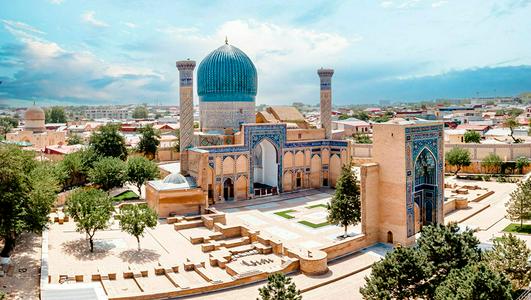 22 October22.10Older Than the Eternal CityWhat has Samarkand accomplished in its three thousand years of existence?
22 October22.10Older Than the Eternal CityWhat has Samarkand accomplished in its three thousand years of existence? -
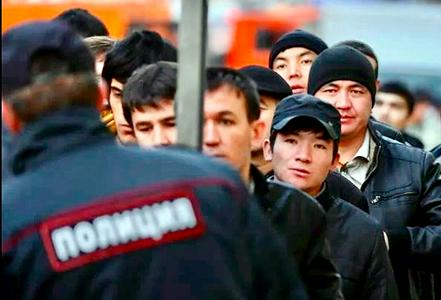 16 October16.10Digital Oversight and Targeted RecruitmentRussia Approves New Migration Policy for 2026–2030
16 October16.10Digital Oversight and Targeted RecruitmentRussia Approves New Migration Policy for 2026–2030 -
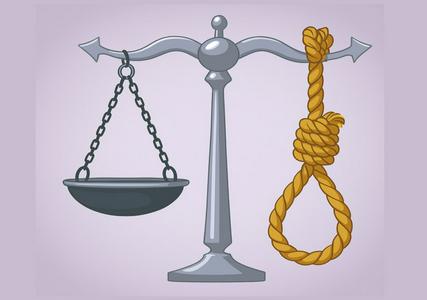 15 October15.10A Step Back into the Middle AgesWhy Kyrgyzstan Should Not Reinstate the Death Penalty
15 October15.10A Step Back into the Middle AgesWhy Kyrgyzstan Should Not Reinstate the Death Penalty -
 03 October03.10Will SKAI Help?Neural Network Joins the Board of Kazakhstan’s Sovereign Wealth Fund Samruk-Kazyna
03 October03.10Will SKAI Help?Neural Network Joins the Board of Kazakhstan’s Sovereign Wealth Fund Samruk-Kazyna -
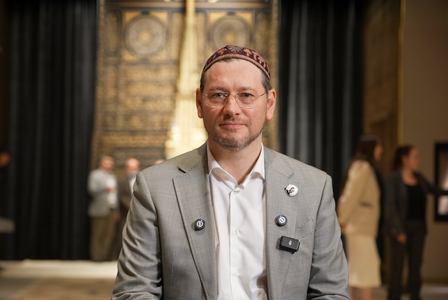 02 October02.10“To See the Kiswa Is Like Making a Small ‘Virtual’ Pilgrimage”Damir Mukhetdinov on the Center for Islamic Civilization in Tashkent, the Kaaba Covering, and Qurans
02 October02.10“To See the Kiswa Is Like Making a Small ‘Virtual’ Pilgrimage”Damir Mukhetdinov on the Center for Islamic Civilization in Tashkent, the Kaaba Covering, and Qurans -
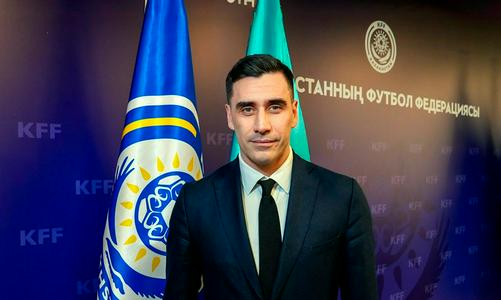 02 October02.10Football, Presidential StyleKFF Secretary General David Loria on the expansion of the Premier League, the new national team coach, and Tokayev’s role in Kazakh football
02 October02.10Football, Presidential StyleKFF Secretary General David Loria on the expansion of the Premier League, the new national team coach, and Tokayev’s role in Kazakh football
